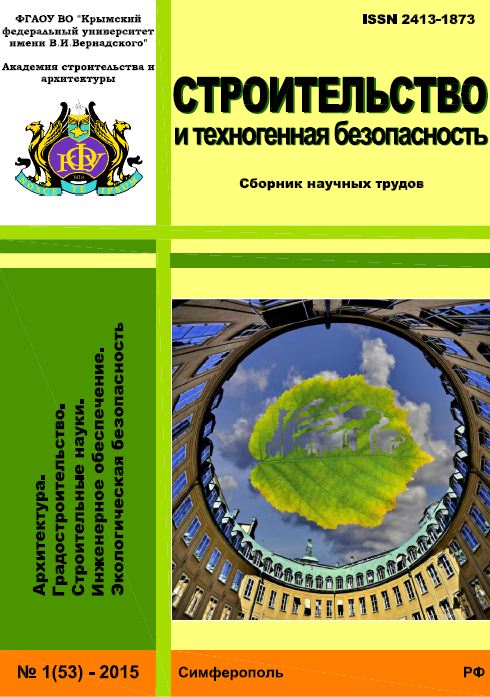The research is related to an important topical issue of studying the processes of kaolinite transformation into metakaolin during heating, which allow supplementing the existing provisions and patterns in terms of reducing the energy intensity of the thermal activation process and the pozzolanic activity of the resulting additive, on the other hand. The chemical composition of the original kaolin clay was determined. On the base of the results of laser diffraction, differential thermal and X-ray phase analysis, as well as infrared spectroscopy, the effect of kaolinite firing temperature on the granulometric composition, degree of dehydroxylation and amorphization of metakaolin was established. The authors determined the pozzolanic activity of the metakaolin mineral additive obtained by thermal activation of kaolin clay in the temperature range of 450-900 , when metakaolin was used as a partial replacement of Portland cement. The greatest increase in the compressive strength of the cement paste, both at the early and grade age is achieved by replacing part of the cement with a mineral additive - thermally activated kaolin at a temperature of 650. An increase in the water demand of the composite cement with the addition of the obtained metakaolin is noted. Higher values of the strength index of cement paste with the addition of metakaolin, obtained by heat treatment of kaolin clay at a temperature of 650 , are most likely explained by achieving the optimal temperature regime for firing kaolinite. In this case incomplete dehydroxylation, but the maximum degree of amorphization that determines the pozzolanic activity of the additive in terms of strength is achieved. The results obtained may be of interest for the practical implementation of the problem of reducing carbon dioxide emissions, resource and energy conservation, improving the construction and technical properties of materials obtained on the basis of a composite cement with the addition of metakaolin.
kaolinite, metakaolin, thermal activation, dehydroxylation, amorphization, pozzolanic activity
1. Strategiya razvitiya promyshlennosti stroitel'nyh materialov na period do 2020 goda i dal'neyshuyu perspektivu do 2030 goda : [utverzhdena rasporyazheniem Pravitel'stva Rossiyskoy Federacii ot
2. Limestone calcined clay cement and concrete: A state-of-the-art review / M. Sharma, S. Bishnoi, F. Martirena, K. Scrivener // Cement and Concrete Research. 2021. vol. 149, 106564.
3. Modificirovannye cementy s primeneniem othodov promyshlennosti Donbassa / S. V. Lahtarina, N. M. Zaychenko, E. V. Egorova [i dr.] // Sovremennoe promyshlennoe i grazhdanskoe stroitel'stvo.
4. Li C., Sun H., Li L. A review: The comparison between alkali-activated slag (Si+Ca) and metakaolin (Si+Al) cements // Cement and Concrete Research. 2010. vol. 40(9). PP. 1341 – 1349.
5. Mitigating alkali-silica reaction induced concrete degradation through cement substitution by metakaolin and bentonite / J. Wei, B. Gencturk, A. Jain, M. Hanifehzadeh // Applied Clay Science. 2019. vol. 182, 105257.
6. Sabir B. B., Wild S., Bai J. Metakaolin and calcined clays as pozzolans for concrete: a review // Cement and Concrete Composites. 2001. vol. 23(6). PP. 441 – 454.
7. Abdul Razak H., Wong H. S. Strength estimation model for high-strength concrete incorporating metakaolin and silica fume // Cement and Concrete Research. 2005. vol. 35. PP. 688 – 695.
8. Jiang G. Effects of metakaolin on mechanical properties, pore structure and hydration heat of mortars at 0.17 w/b ratio // Construction and Building Materials. 2015. vol. 93. PP. 564 – 572.
9. Mo Z., Wang R., Gao X. Hydration and mechanical properties of UHPC matrix containing limestone and different levels of metakaolin // Construction and Building Materials. 2020. vol. 256, 119454.
10. Chen X., SunPang Z. J., Pang J. A research on durability degradation of mineral admixture concrete // Materials. 2021. vol. 14, 1752. DOI:https://doi.org/10.3390/ma14071752.
11. Influence of calcined clay morphology on flow in blended cementitious systems / D. Benkeser, K. Hernandez, F. Lolli, K. Kurtis // Cement and Concrete Research. 2022. vol. 160, 106927.
12. Rassulov V. V., Platova R. A., Platov Yu. T. Kontrol' kachestva metakaolina metodom spektroskopii v blizhney infrakrasnoy oblasti spektra // Stroitel'nye materialy. 2018. № 5. S. 53 – 56.
13. Thu-Ha Phung-Thi. Metakaolin as an additive in composite cement // A thesis presented for the Degree of Doctor of Engineering at the Faculty of Civil Engineering of the Weimar Bauhaus University. 2013, 119 pp.
14. Dehydroxylation of kaolinite to metakaolin – a molecular dynamics study / S. Sperinck, P. Raiteri, N. Marks, K. Wright // Journal of Materials Chemistry. 2011. vol. 21. PP. 2118 – 2125.
15. Pozzolanic activity of metakaolins by the French standard of the modified Chapelle test: A direct methodology / E. Ferraz, S. Andrejkovicova, W. Hajjaji [et al.] // Acta Geodynamica et Geomaterialia. 2015. vol. 1
16. Salvador S. Pozzolanic properties of flash-calcined kaolinite: A comparative study with soak-calcined products // Cement and Concrete Research. 1995. vol. 25(1). PP. 102 – 112.
17. The effect of dehydroxylation / amorphization degree on pozzolanic activity of kaolinite / A. Shvarzman, K. Kovler, G. S. Grader, G. E. Shter // Cement and Concrete Research. 2003. vol. 33(3). PP. 405 – 416.
18. Formation of aluminosilicate geopolymers from 1:1 layer-lattice minerals pre-treated by various methods: a comparative study / K. J. D. MacKenzie, D. R. M. Brew, R. A. Fletcher, R. Vagana // Journal of Materials
19. TEM study of kaolinite thermal decomposition by controlled-rate thermal analysis / F. Bergaya, P. Dion, J. F. Alcover [et al.] // Journal of Materials Science. 1996. vol. 31. PP. 5069 – 5075. DOI:
20. Stroganov V.F., Amel'chenko M. O., Potapova L. I. Vliyanie kislotnoy i termicheskoy aktivacii kaolina na ego dispersnost', himicheskiy sostav i sorbcionnye svoystva // Izvestiya KGASU. 2016. №
21. Lagier F., Kurtis K. E. Influence of Portland cement composition on early age reactions with metakaolin // Cement and Concrete Research. 2007. vol. 37. PP. 1411 – 1417. DOI:https://doi.org/10.1016/j.cemconres.2007.07.002.
22. He C., Osbaeck B., Makovicky E. Pozzolanic reactions of six principal clay minerals: Activation, reactivity assessments and technological effects // Cement and Concrete Research. 1995. vol. 25, no. 8. PP 1691
23. Mitra G. B., Bhattacherjee S. X-ray diffraction studies on the transformation of kaolinite into metakaolin: I. variability of interlayer spacings // The American Mineralogist. 1969. vol. 54. PP. 1409 – 1418.
24. Salvador S. Pozzolanic properties of flash-calcined kaolinite: A comparative study with soak-calcined products // Cement and Concrete Research. 1995. vol. 25, no. 1. PP. 102 – 112.
25. Dyatlova E. M., Sergievich O. A., Bobkova N. M. Strukturnye osobennosti prirodnyh i obogaschennyh kaolinov mestorozhdeniy Respublika Belarus' // Ves. Nac. akad. navuk Belarusi. Ser. him. navuk. 2018.
26. Ilić B. R., Mitrović, A. A., Miličić Lj. R. Thermal treatment of kaolin clay to obtain metakaolin // Hemijska Industriya. – 2010. – Vol. 64, no. 4. PP. 351 – 356. DOI:https://doi.org/10.2298/HEMIND100322014I.
27. Mitrović A., Zdujić M. Mechanochemical treatment of Serbian kaolin clay to obtain a highly reactive pozzolana // Journal of the Serbian Chemical Society. 2013. vol. 78, no. 4. PP. 579 – 590.





